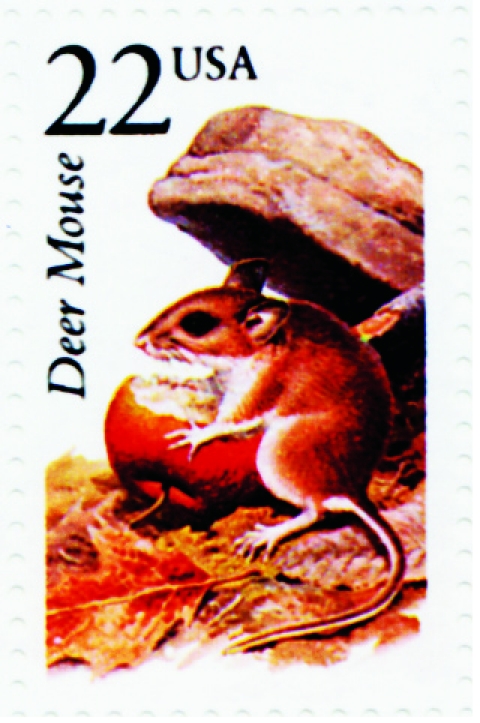
Abbie E. C. Lathrop was born in Illinois in 1868, the only child of schoolteachers who were originally from Granby, MA. Few details about her childhood are known. Lathrop was homeschooled for the first 16 years of her life, after which she attended an unidentified academy for approximately 2 years, which allowed her to obtain an Illinois teaching certificate. She taught elementary school for several years but was not successful, apparently because of chronic ill health. Lathrop eventually quit teaching and moved to a farm in Granby in 1900. She initially attempted to start a poultry business, which failed. Her focus then shifted to breeding “fancy” mice and rats, which she marketed to rodent hobbyists and keepers of exotic pets, and later began selling in large numbers to scientific researchers. She also raised guinea pigs, rabbits, and ferrets. Some of her guinea pigs were purchased by the US government and used to detect toxic gases in the trenches of World War I battlefields. Two of Lathrop's close friends, Ada Gray and Edith Chapin, assisted in her animal business, and the women also employed many neighborhood children to clean cages and feed oats and crackers to the animals. Lathrop kept careful breeding records, which proved helpful for researchers. At one point, her farm housed more than 11,000 mice.
Several years after Lathrop developed her mouse colonies, she noticed that some of the animals were developing unusual skin lesions. She sent samples to several prominent scientists asking for help. Renowned experimental pathologist Leo Loeb (1869-1959), then at the University of Pennsylvania, became interested in the problem and diagnosed the lesions as malignant. His correspondence with Lathrop developed into an ongoing research collaboration that continued until her death. Loeb suggested several experiments related to cancer that Lathrop then carefully performed at her farm. Their mutual work resulted in 10 coauthored articles in prominent journals, such as the Journal of Experimental Medicine and the Journal of Cancer Research. Among other important observations, Lathrop and Loeb established that susceptibility to mammary tumors varied between different strains of mice and that ovariectomy reduced the incidence of mammary tumors.
William Ernest Castle (1867-1962), a pioneer in mammalian genetics who was among the first to realize the potential power of mouse models for human disease, bought some of Lathrop's mice for his laboratory in 1902, a fertile time for genetic research immediately after the rediscovery of the now-famous pea experiments of the Moravian monk Gregor Mendel. Castle directed the Bussey Institute for Biological Research at Harvard University for more than 30 years, and he trained most of the leaders in the early mammalian genetics field, including Nobel Laureate George D. Snell (1903-1996) and Clarence Cook (“C.C.”) Little (1888-1971). Little, in turn, founded a facility in Bar Harbor, ME, now known as the Jackson Laboratory, which remains one of the world's most important sources of inbred strains of laboratory mice. The most frequently used laboratory mouse strain for the past 80 years, C57BL/6J (“Black 6”), is derived from one of Lathrop's animals—mouse number 57—bred by Little. The complete genomic sequence of the C57BL/6J mouse was reported in 2002.
Lathrop died of pernicious anemia in 1918 and was buried in West Cemetery in Granby, near her 2 close friends Gray and Chapin. Pernicious anemia became treatable with liver extracts in the 1920s through the work of George R. Minot (1885-1950), George R. Whipple (1878-1976), and William P. Murphy (1892-1987), who shared a Nobel prize for their discovery in 1934. Ironically, William Bosworth Castle (1897-1990), the son of William Ernest Castle and a protégé of Minot, showed no interest in his father's field of animal genetics; instead, he established his formidable reputation in the field of hematology in the 1920s when he discovered that patients with pernicious anemia lack a gastric intrinsic factor. Lack of intrinsic factor due to autoantibodies against the gastric parietal cells that secrete intrinsic factor is the proximate cause of the disease that resulted in Lathrop's death.
Although the cartoon characters Mickey and Minnie Mouse have been honored philatelically hundreds of times by many countries, only a few postage stamps have featured real mice or other rodents, probably because of the poor reputation that rodents have had among humans for thousands of years. Ancient Egyptians, for example, revered cats because cats kept grain stores free of mice and other “vermin.” The US Postal Service included the deer mouse in a 1987 series of 50 stamps featuring North American wildlife (Scott No. 2324). However, the deer mouse (genus Peromyscus)—the primary reservoir species for hantavirus and a vector for transmission of several other infections including Lyme disease, babesiosis, and bubonic plague—is used for laboratory experiments less frequently than strains of the common house mouse (Mus musculus).


